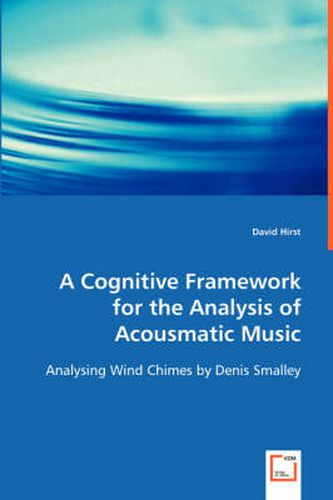Readings Newsletter
Become a Readings Member to make your shopping experience even easier.
Sign in or sign up for free!
You’re not far away from qualifying for FREE standard shipping within Australia
You’ve qualified for FREE standard shipping within Australia
The cart is loading…






This title is printed to order. This book may have been self-published. If so, we cannot guarantee the quality of the content. In the main most books will have gone through the editing process however some may not. We therefore suggest that you be aware of this before ordering this book. If in doubt check either the author or publisher’s details as we are unable to accept any returns unless they are faulty. Please contact us if you have any questions.
The analysis of acousmatic music has traditionally been very difficult since there is no score to freeze the music in time. Analysis relies heavily on the act of concentrated listening. Since aural perception is so crucial to the analysis of acousmatic music, this book poses the questions: Can a framework for the analysis of acousmatic music be derived from cognition theories, research on the auditory perception of everyday environmental sounds, and studies into the perception of Western tonal music? If so, what are the frameworks attributes? From experimental data documented in the relevant literature, this book draws together the constituents of a cognitive framework called the Segregation, Integration, Assimilation and Meaning (SIAM) framework for the analysis of acousmatic music. The book reports on the practical application of the SIAM framework through a detailed analysis of the work Wind Chimes, by Denis Smalley. This analytical methodology should be especially useful to auditory cognition professionals, researchers interested in musical analysis of non-notated music, and composers seeking to gain more insight into musical structures in electroacoustic music in general.
$9.00 standard shipping within Australia
FREE standard shipping within Australia for orders over $100.00
Express & International shipping calculated at checkout
This title is printed to order. This book may have been self-published. If so, we cannot guarantee the quality of the content. In the main most books will have gone through the editing process however some may not. We therefore suggest that you be aware of this before ordering this book. If in doubt check either the author or publisher’s details as we are unable to accept any returns unless they are faulty. Please contact us if you have any questions.
The analysis of acousmatic music has traditionally been very difficult since there is no score to freeze the music in time. Analysis relies heavily on the act of concentrated listening. Since aural perception is so crucial to the analysis of acousmatic music, this book poses the questions: Can a framework for the analysis of acousmatic music be derived from cognition theories, research on the auditory perception of everyday environmental sounds, and studies into the perception of Western tonal music? If so, what are the frameworks attributes? From experimental data documented in the relevant literature, this book draws together the constituents of a cognitive framework called the Segregation, Integration, Assimilation and Meaning (SIAM) framework for the analysis of acousmatic music. The book reports on the practical application of the SIAM framework through a detailed analysis of the work Wind Chimes, by Denis Smalley. This analytical methodology should be especially useful to auditory cognition professionals, researchers interested in musical analysis of non-notated music, and composers seeking to gain more insight into musical structures in electroacoustic music in general.